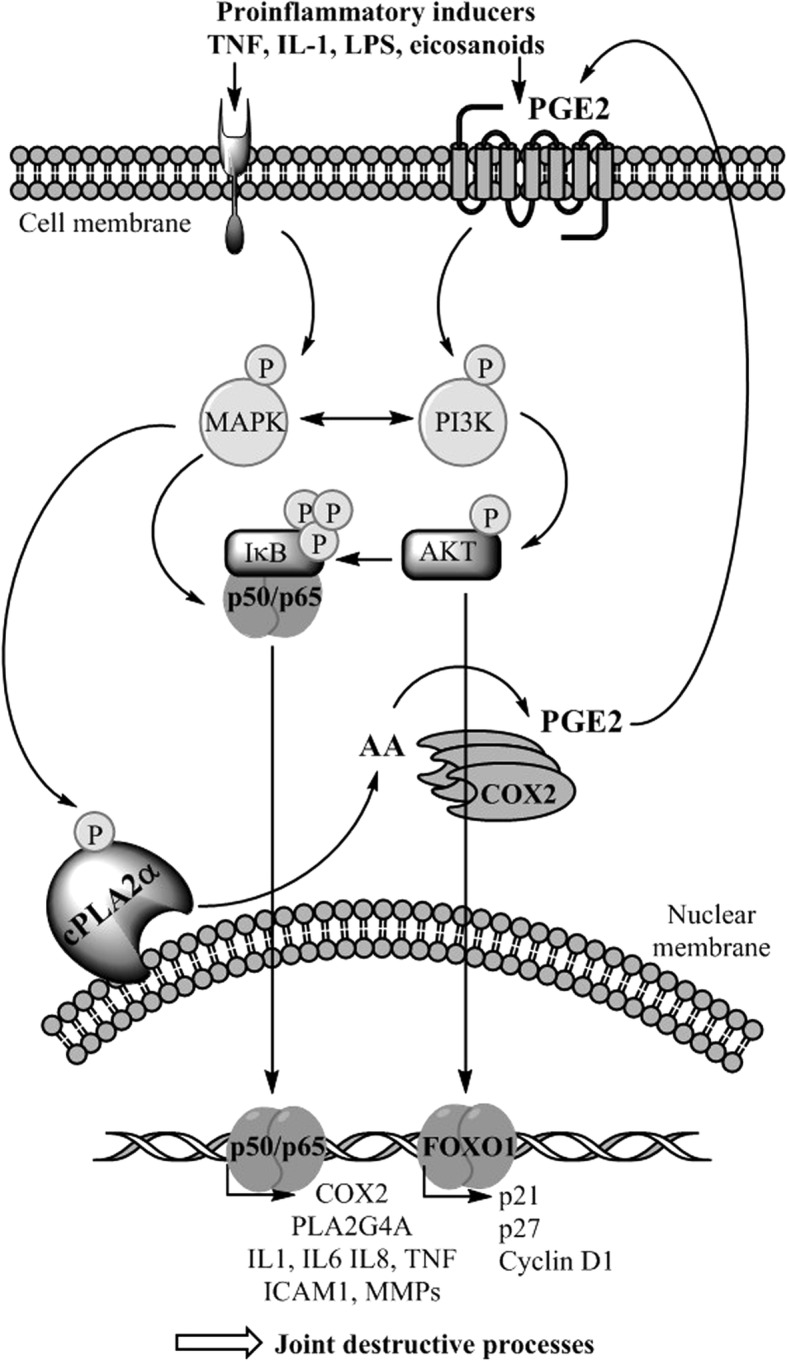Fig. 5.

Hypothesized molecular understanding of the disease-modifying anti-rheumatic drug (DMARD) properties of cytosolic phospholipase A2 protein (cPLA2α) inhibitors in the inflamed joint. Different types of cells are activated by the ongoing inflammatory process; chondrocytes, osteoblasts, osteoclasts, synoviocytes, immune cells and endothelial cells. Cell activation involves increased activity of many signaling pathways that involve cPLA2α. Upon reduced cPLA2α activity, reduced arachidonic acid (AA availability) and eicosanoid levels may lead to reduced activity of transcription factors such as NF-κB and FOXO1, that regulate the transcription and synthesis many mediators of inflammation and proliferation. Reduced levels of pro-inflammatory mediators and altered levels of cell cycle regulators may explain how normalization of cPLA2α activity may help reduce the ongoing joint destructive processes. LPS, lipopolysaccharide; MAPK, mitogen-activated protein kinase; PGE2, prostaglandin E2; COX2, cyclooxygenase 2
